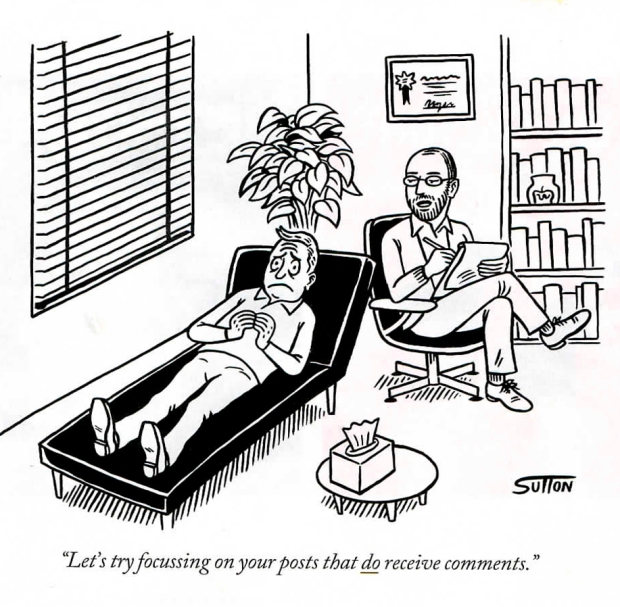 I’d selected several books to take with me on a recent family vacation at the Florida Gulf coast. I was frankly skeptical about A World Gone Social, by Ted Coiné and Mark Babbitt, published by Amacom. The social media domain is vast and I was doubtful that any book could really do justice to the territory — what is happening today, why it is happening, how this will likely play out in the next few years, and, most importantly, what firms should be doing about it. But the book did not disappoint!
I’d selected several books to take with me on a recent family vacation at the Florida Gulf coast. I was frankly skeptical about A World Gone Social, by Ted Coiné and Mark Babbitt, published by Amacom. The social media domain is vast and I was doubtful that any book could really do justice to the territory — what is happening today, why it is happening, how this will likely play out in the next few years, and, most importantly, what firms should be doing about it. But the book did not disappoint!
Subtitled “How Companies Must Adapt to Survive,” A World Gone Social does an excellent job presenting the case for the “social revolution.” If you are not convinced that social media is part of a revolution, each of the early chapters will convince you that this is real, significant and worthy of the over-hyped term “revolution.” It’s packed with well-researched anecdotes — the success stories and the failures — with lessons nicely extracted. From building the case to taking advantage of social media, the book offers plenty of intelligent, practical and pragmatic advice on how to become part of the social media-enabled revolution (or however that ends up labelled by history!)
The book covers all the bases:
- Customer power and the “Here Comes Everybody” effect so powerfully articulated by Clay Shirky.
- The social employee, and how social media is revolutionizing the company-employee relationship, including recruiting and engaging.
- Viewing the social revolution as the next wave in the evolution from an agrarian to industrial economic model.
- How social is transforming the importance of size and depth in business operating models.
- How to lead your own organization into the social revolution, and the risks of of moving too slowly while your competitors seize the high ground.
A Wold Gone Social recognizes that this is not just about marketing, brand, or the customer experience. It is all these and more. Just as the shift from agrarian to industrial economies had a transformational impact on how and where we live, how and where we work and who we work for, so is social media having profound impact on organization structure and the very nature of “the firm” and “community.”
Organizational Implications of Social — the Emerging Holacracy
I was absolutely delighted to see a wonderful chapter entitled “Flat: The New Black” that presents a very compelling case for the impact of social media on management and how employee performance and engagement blossom in flatter organizations enabled by the social revolution. This chapter discusses the concept of a Holacracy as an emerging organizational form.
This chapter particularly resonated with me. Business Relationship Management Institute (BRMI) was very much a product of the social media revolution. If it were not for the social media revolution, BRMI would almost certainly not exist today. I co-founded BRMI with Aaron Barnes and Dr. Aleksandr Zhuk. We’d been co-moderating a LinkedIn group that Aaron had created for Professional Business Relationship Managers.
But more importantly, beyond its social media roots, BRMI is deliberately shaping itself as a Holacracy — a model we felt ideally suited to our non-profit status, and as an entity formed by a community of 3 who shared a passion for business relationship management, and wanted to collaborate with and serve a growing community of professional business relationship managers. Our vision and design parameters meant that management overhead had to be kept to an absolute minimum while active membership engagement would fuel future growth. As such, we not only leveraged the common social media channels (Twitter, LinkedIn, FaceBook, YouTube, etc.) but we also leveraged social tools — Atlassian’s Confluence wiki in particular as the engine for collaboration and for housing the BRM Interactive Body of Knowledge.
Implications for the Business Relationship Manager
A Wold Gone Social is a ‘must read’ for BRMs — there are direct implications for how the BRM can engage with key stakeholders, but more importantly, for the advice, vision and leadership the BRM can bring to her business partner regarding the potential for social media to impact every aspect of the business and its market.
Note: My next on-line BRMP Certification course is being held across 3 Tuesdays—November 4, 11 and 18 . For details, please click here.
Social Innovation Word Cloud courtesy of The Digital Doctorate








 Why don’t I use my blog to simply point to someone else’s post? Many blogs do, but from my perspective, that does not seem very value-adding. But
Why don’t I use my blog to simply point to someone else’s post? Many blogs do, but from my perspective, that does not seem very value-adding. But 